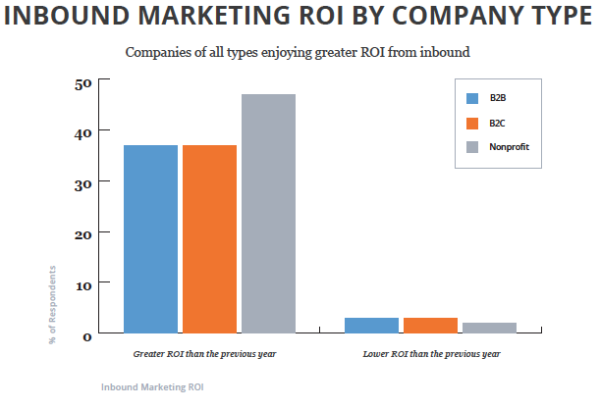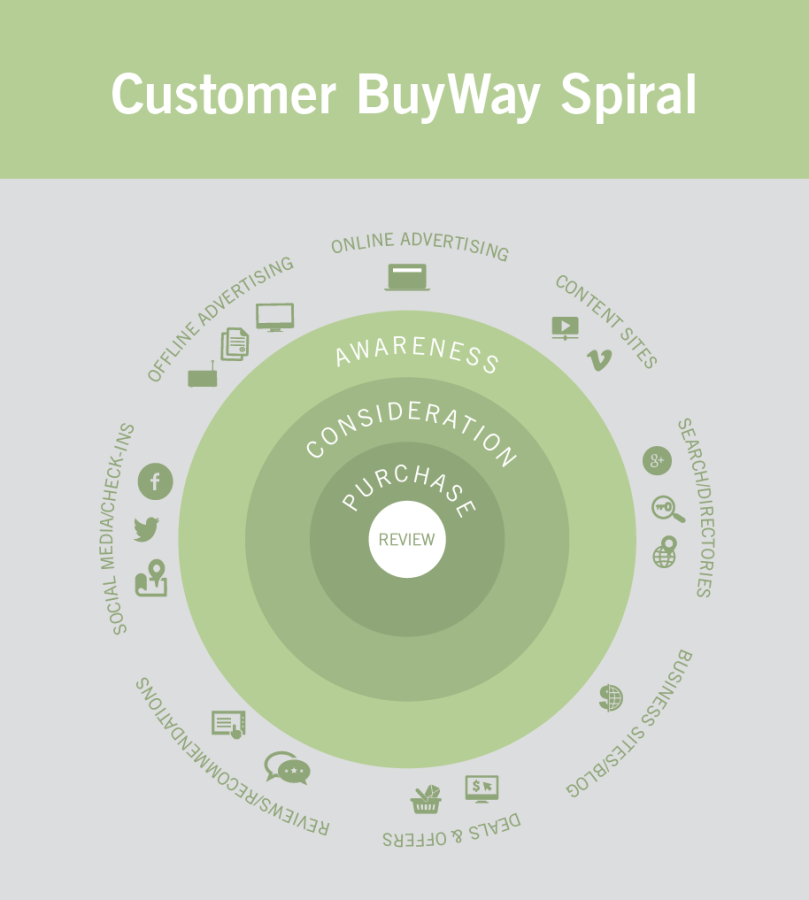“Why aren’t we engaging with more people?”
“Why are our donation numbers down?”
“Why do the majority of our donations come from a small minority of our donors?”
These are just a few of the questions that non-profit board members consistently ask the marketing and development departments.
Non-profit marketing poses a unique set of challenges. Resources are scarce and marketers are expected to make miracles happen on a shoestring budget. Compared to a for-profit company, the value of marketing can be difficult to demonstrate clearly to a non-profit organization and its leadership team.
Page views, click-through rates, and conversion rates are simple ways to assess how well a transaction-focused e-commerce business is doing. However, determining the success of a non-profit’s digital marketing is not as easy. You can look at brand awareness, the number of volunteers, and financial donations, but the true effect of non-profit marketing takes much longer to see.
The success of your non-profit marketing relies on how well you integrate your brand story into your audience’s daily lives. The most effective way to do this is by sharing an engaging story that your audience can relate to, allowing them to see themselves as the “hero” of the tale. Just capturing your audience’s attention is no longer sufficient. Paid ads can be expensive and are often overlooked, while traditional outbound campaigns do not provide the personalization that today’s connected consumers expect.
Your goal as a non-profit brand is to build a life-long relationship with your supporters and the constituents that you serve — from the first time they interact with you to their first donation, and ultimately, to serving as an advocate for your brand.
One of the most efficient ways for a non-profit to share the brand story and to engage with its audience is through inbound marketing. Inbound marketing takes a more organic, non-invasive approach to marketing, and the results lead to stronger, long-term customer relationships with a much lower price tag. It employs the development of strategic assets such as blogs, videos, eBooks, whitepapers and many others, to share relevant content with its target audience. By telling your brand story in a compelling and engaging way, and delivering it in a personalized manner to the right person at the right time, you can transform your organization’s marketing efforts and consistently generate ROI.
Year-over-year studies continue to show that inbound marketing generates higher ROI than any other channel, especially for non-profit organizations. According to the Direct Marketing Association, inbound marketing has an ROI of 3800 percent. By comparison, Chief Marketer recently reported that the average ROI of an email campaign is 28.5 percent and traditional direct mail comes in at 7 percent.
From our experience of working with non-profit organizations over the past 10 years, TopRight has identified 6 tips for non-profits to achieve inbound marketing success:
1. Align your brand messaging with your brand story, and keep it consistent
Your story is at the core of everything that you do as a non-profit. It’s the reason people donate, participate, and, most importantly, care about your organization. It is your responsibility to deliver a consistent message that accurately tells your “why” – why you do what you do, what you do to accomplish that why, and how that why relates to your audience’s personal or professional lives.
When addressing your donors and participants, your story must address three key elements, considering how you want your audience to think, feel, and act:
- Think: What does your donor or participant think of your organization?
- Feel: How does that donor or participant feel about your organization?
- Act: How do you want your participant or donor to act – before they learn about your why, after the first donation, and on an ongoing basis?
The core of how you want your audience to think, feel, and act is found in your non-profit’s six-second story. This story should guide the messaging of all content you produce. If it does not align to your story, your strategy, or your systems, don’t waste the resources.
2. Define your audience segments and constituent personas
Defining your audience by “Constituent Personas”, also referred to as buyer personas, is the best way to get into the mind of those best suited to donate and engage with your cause.
As defined by TrackMaven,
“A Buyer Persona is a research-based representation of the ideal buyer for a company. They are created in the form of a fictional person. They embody the behavioral characteristics befitting of somebody who needs your product or service. Buyer personas contain information on a buyer’s demographics, location, etc. It also shows the consumer behavior of a company’s ideal buyer. They answer who a company’s ideal buyers are, what those buyers want to buy, and how those buyers think.”
By defining your “Constituent Personas”, you’ll be able to have a deep understanding of your target audience each persona in such a way that you know the right time, the right place, and the right message to reach and engage donors and participants. When defining these personas, it is possible that you will discover one of your current segments is not receiving the proper messaging, or that you’re targeting the wrong segment altogether.
3. Map your personas to the “Customer BuyWay”
Once you have aligned your brand story and your personas, it is time to identify your constituent’s journey, or as TopRight calls it, the “Customer BuyWay”. This involves breaking down the journey that your audience will take as it engages with your brand. The “Customer BuyWay” can be broken down into several phases starting from the moment that someone learns about your cause to after a donation, decision, or commitment point where they become an advocate for your organization.
4. Define the right messaging for each persona at each touchpoint in their journey
Once you have defined the persona’s journey along the “Customer BuyWay”, you must map the appropriate messaging to each touchpoint. Start by performing an in-depth audit of your current content. It’s essential for you to understand what pieces of existing content you have, which persona they are best suited for, and where they fit in their journey.
You must classify each piece of content from three perspectives:
- Content Type: What type of content is it? Some types of content will be better fit for certain stages. It’s important to remember: You’re not sealing the deal with a blog post.
- Desired Audience Behavior/Reaction: What is your best guess at your persona’s behavior when they come across this piece of content? Consider your persona’s journey for a more accurate guess.
- Intent of the Content: What is the intent of the content? How does this relate to the buyer journey? Is it meant to attract someone to an event? If so, it’s probably not meant for an early stage when someone may not even know about your cause.
This classification process is likely to reveal content gaps in certain areas of the journey. You must prioritize and if they represent critical gaps in the journey, then dedicate resources to develop new content to fill those gaps.
5. Be adaptive
Successful inbound marketing isn’t just “set it and forget it”. It’s important that you tweak and make necessary adjustments along the way. Your team needs to be agile and highly responsive. You can’t afford to sit back and hope for the best once you start to nurture your personas throughout their journey.
It’s important to approach the various aspects of inbound marketing like an experiment. Each piece of content, each persona, and each phase of the “Customer BuyWay” journey begins as a set of hypotheses. If a hypothesis is disproven, you must adjust quickly to keep your marketing and messaging on course. Test your content, learn from it, and optimize as you go. If you have a persona that isn’t producing the desired results, it’s time to review your journey, your content, and the persona profile. Are they still a viable target? Is your messaging aligned with your brand story? Is that story being delivered to the right person, at the right time, in the right channel?
6. Be patient
By definition, inbound methodology is focused on building relationships to generate and sustain long-term results. It’s important to understand that inbound takes time. You wouldn’t start building a house without laying a foundation; nor does a foundation provide the benefits of a fully built home. It’s common to feel frustrated in the early days as inbound efforts may not outperform in the short-term the same way as an outbound strategy.
Learning the ins-and-outs of inbound marketing may test your patience. Inbound marketing works especially well for non-profits when they have a simple story, a clear strategy, and aligned systems. Inbound enables you to find the right people for your cause, and consistently pull them towards your cause with compelling, meaningful messaging that reaches them at the right time and drives real, transformational results.
While inbound is a highly effective strategy for non-profits, it is only as strong as the story you tell, the strategy you employ to reach your audience and the systems you use to execute your strategy. You have to bring a simple, clear, and aligned story to every touchpoint with every donor and participant. Inbound is how you get that story to those who want to interact with your organization. Your systems are the people, processes, and technology that you use to bring that strategy to life. Learn more about how you can bring simplicity, clarity, and alignment to your brand’s Story, Strategy, and Systems in our latest eBook Transformational Marketing: Moving to the TopRight.

